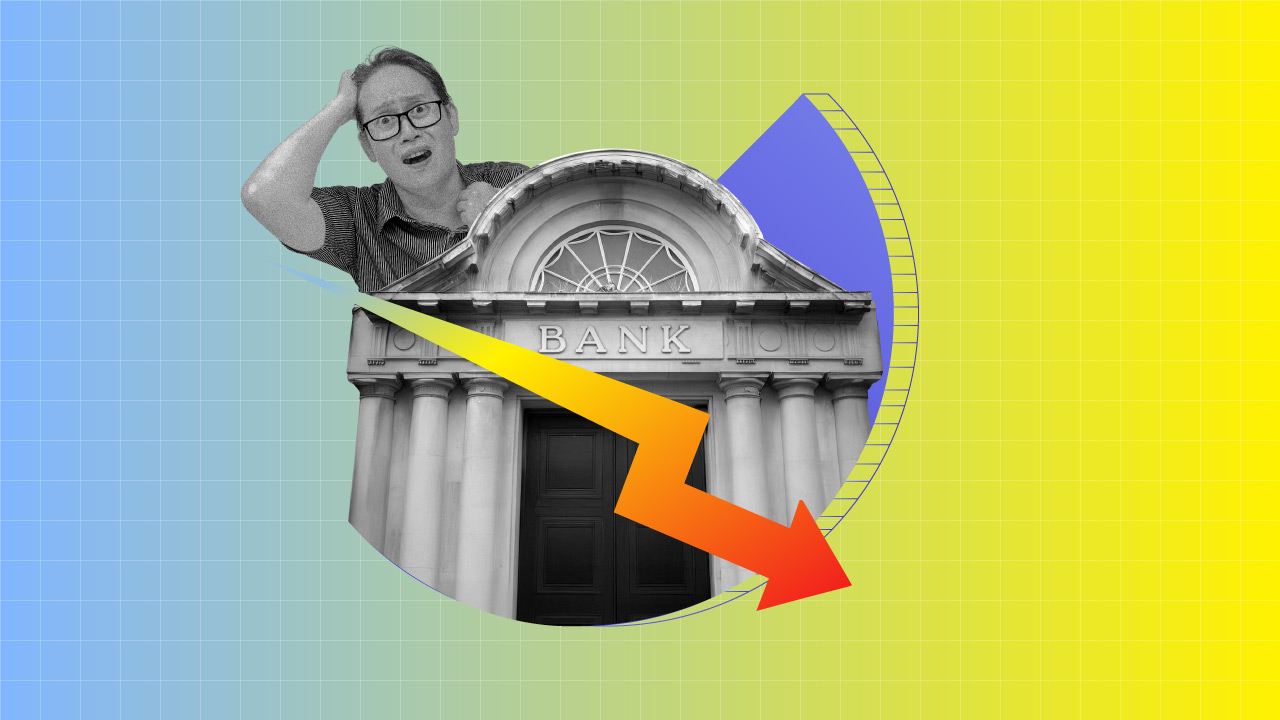
Bad banks is a term that gained popularity in the aftermath of the global financial crisis of 2007-09 in which several big banks went bust. The crisis triggered discussions about setting up bad banks—a corporate structure that isolates risky assets held by banks under a separate entity—in many countries across the world.
This article will discuss what is a bad bank, what are non-performing assets or bad assets, and the pros and cons of bad banks.
What is a non-performing asset?
Let’s begin with the basics and learn what is a non-performing asset or bad asset that form the foundation of bad banks. This will help you understand the concept better. For any financial institution including banks, asset refers to the financial resources that can generate income. For banks, loans, credits, and advances help to generate income from interest. So, when a borrower stops paying interest on a loan, the bank does not earn income from it and the loan is classified as a non-performing asset or NPA. As per the Reserve Bank of India, all banks must list their loans or any other credit as NPA if the repayment is stopped for more than 90 days.
NPAs significantly impact the lender as prospective income gets locked in the non-performing asset. Also, a large number of NPAs impacts the lending capacity of the organization and long-term NPAs count as financial loss to the organization.
Types of non-performing assets (NPA)
We have learned what is NPA. Now, we will learn about the different types of NPA or non-performing assets before we finally move to talk about bad banks. There are primarily three types of NPAs—substandard, doubtful, and loss which we will discuss briefly below.
- Substandard assets: NPAs that remain non-performing for up to 12 months are classified as substandard assets. Although these types of NPAs bear higher credit risk, they also do have some chance of recovery as well. It is one of the most common types of NPA categories most banks and financial organizations count. Also, it is the first phase of NPA where banks need to take essential steps to prevent it from turning into a loss.
- Doubtful assets: The second type of non-performing asset is doubtful assets. Generally, an asset that remains a non-performing asset for more than 12 months is automatically categorized as a doubtful asset. The credit risk of such non-performing assets is relatively higher than the substandard asset category. Also, the chances of return are equally lower than the substandard category NPAs.
- Loss assets: The last type of NPA counts as loss assets. Usually, non-performing assets with very little value of return or almost no prospect of recovery are deemed to be listed as the loss NPA or non-performing assets of the financial institution. Financial institutions and banks usually write off the entire value of these assets or sell them to Asset Reconstruction Companies (ARCs).
Understanding a bad bank
To understand bad banks, you should learn about the concept of NPAs. A bad bank is a financial institution whose primary function is to acquire NPAs from different banks and financial organizations. By definition, bad banks is a specialized ARC that purchases non-performing assets from different banks and reconstructs them for resell. However, a bad bank does not participate in taking deposits or lending. Instead, they help banks and financial organizations to clean up their financial statements.
Bad banks work by collecting the NPAs from different banks and then reconstructing them for resell. They charge higher interest while reselling the newly constructed credit packages than the original acquisition cost to profit from it.
What are the pros and cons of a bad bank?
Bad banks are financial organizations that help banks to clear non-performing assets from their balance sheets. However, these financial support systems come with their pros and cons.
Pros of a bad bank
We have already discussed what is a bad bank. Experts suggest that a bad bank can offer a number of benefits and here are some of them:
- Improving capital buffers
Improvement of capital buffers is the primary advantage of a bad bank. Taking out bad loans from banks is usually not a straightforward process. However, when governments back up bad banks, lending in originating banks also becomes easier, thanks to increased confidence in the system.
- Freeing up capital
Freeing up capital is another important benefit of a bad bank. Non-performing assets can be transferred to the bad bank and originating banks can lend to customers who are more creditworthy by using provisions made against bad assets. A bad bank as a financial reconstruction entity will free up bad assets.
- Consolidation
Bad asset or NPA reconstruction is not easy. The process presents a number of challenges and problems. A bad bank can facilitate the aggregation of NPAs or bad assets under a single financial entity. This offers breadth and scale to the reconstruction effort of non-performing or bad assets.
Cons of a bad bank
Despite the various advantages of a bad bank, one must be aware of its flaws. Here are some of them:
- Moral hazard
Moral hazard is a major drawback of a bad bank. When a government helps a bank deal with bad assets or capital, it could disincentivize financial entities to exercise caution in their future lending policies and procedures. In other words, they would bank on government intervention to deal with bad assets.
- Inter-government transfer of loans
A bad bank facilitates the transfer of bad loans from a public sector or private bank to a government-backed bad bank. This means that the bad asset or capital is just transferred from one entity of the government to another, making the available incentives the same for both entities.
What are the associated challenges?
Bad banks come with their share of advantages and disadvantages. However, the framework it uses or the ecosystem in which it operates can present various difficulties or challenges.
Finding investors or buyers
One of the primary challenges of a bad bank is finding investors or buyers. Buyers usually want to invest in profitable and safe assets. On the other hand, a bad bank generally offers risky assets or non-performing assets. Buyers do not feel safe to deal with such risky assets. Especially, when there is no market mechanism for monitoring and regulating such processes.
Bank recapitalization
Governments usually intervene to help when financial institutions like banks face financial crises. This is called bank recapitalization. It helps banks to deal with financial hazards caused by loan losses. During the financial crisis of 2007-09, the concept of bank recapitalization become popular. A bad bank also has a similar purpose, making it only a duplicate of government-authorized support for bad assets or non-performing assets. This takes away the credibility and relevance of a bad bank.
Price Discovery
Price discovery is another crucial challenge for a bad bank. A financial institution can find it challenging to acquire bad loans from banks because of differences in future liabilities and pricing models. Similarly, there are also differences in the terms used in various loan purchase agreements of different financial institutions. This makes the transfer of bad loans difficult.
Conclusion
There is no doubt that a bad bank is an excellent approach to recovering NPAs and potential losses associated with non-performing assets. Also, bad banks provide excellent benefits from freeing up capital, improving capital buffers, consolidation, and more. But they have several drawbacks, including the difference between gaps in lending standards, moral hazards, and unclear capitalization. Structural reforms in the banking sector are needed to make bad banks more useful, efficient, and effective.







